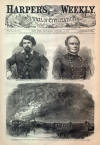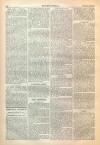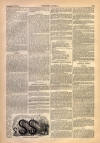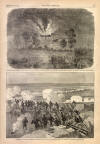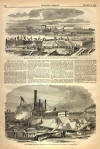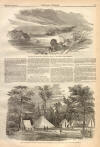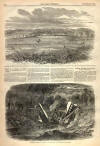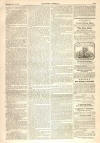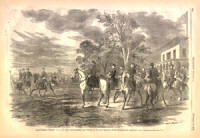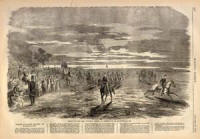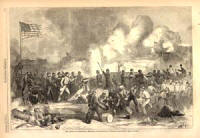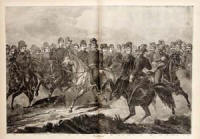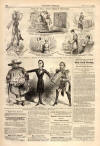The "New Era" Gun Boat
|
|
This Site:
|
HARPER'S WEEKLY. [OCTOBER 12, 1861. 646 BUILDING PONTOONS FOR MILITARY USE ON THE MISSISSIPPI.—SKETCHED BY ALEXANDER SIMPLOT.]THE WAR IN MISSOURI.WE devote a large proportion of our space this week to illustrations of the War in Missouri. On page 644 will be found a picture of MAJOR-GENERAL FREMONT AND HIS STAFF INAUGURATING CAMP BENTON, which is located near the fair grounds, some two miles from St. Louis. The following are the names and rank of the members of General Fremont's staff: Chief of Staff, Brigadier-General A. Asboth: Assistant Adjutant-General, Captain Chauncey M'Keever ; Military Secretary and Aid-de-Camp, Colonel J. H. Eaton; Chief Topographical Engineer, Colonel John Fiala ; Chief of Ordnance, Colonel Gustave Waagner; Chief of Artillery, Lieutenant-Colonel James Totten; Judge Advocate, Major R. M. Corwin ; Division Surgeon, Doctor T. Telkampf; Assistant Surgeon, Doctor John Cooper; Acting Assistant Q. M. General, Brigadier-General J. M'Kinstry; Deputy Paymaster-General, Lieutenant-Colonel T. P. Andrews; Commander of Body Guard, Major Charles Zagonyi ; Musical Director, Captain A. Waldauer; Aids-de-Camp, Colonel A. Albert, Colonel Gustave Koerner, Colonel J. P. C. Schenck, Colonel Owen Lovejoy, Colonel John A. Gurley, Colonel J. C. Woods, Major James W. Savage, Major Frank J. White, Major William Dorsheimer, Major H. Ramming, Major B. Rush Plumley, Captain J. R. Howard, Captain Leonidas Haskell, Captain Joseph Reminyfy. The artillery seen in the picture are Totten's famous battery which did so much execution at the Battle of Springfield. The large building in the picture is the officers' quarters, the lower one the soldiers' barracks. On page 645 we illustrate the CHARGE OF THE IRISH BRIGADE AT LEXINGTON. Every body has read the account of this splendid movement : how the rebels, outnumbering our forces in the proportion of four to one, had driven our outposts in, and were preparing to assault our intrenchments, when Colonel Mulligan mustered his Irishmen, sallied forth, and scattered the rebels at the point of the bayonet. Our artist has caught the spirit of the scene. On this page we give a picture, from a sketch by Alexander Simplot, of the " NEW ERA," one of the new gun-boats built for Government service on the Mississippi also, a picture of the PONTOONS NOW BEING BUILT ON THE MISSISSIPPI for the use of General Fremont's army. Pontoons are used for the passage of rivers by armies on the march. Latterly, in this country, our engineer officers have used vulcanized India-rubber pontoons, consisting of three cylinders connected together. From the appearance of the objects depicted in the sketch, we should judge that Fremont's pontoons are more like scows, which will not be taken out of the water, but will be floated down with the expedition which descends the Mississippi. Finally, on page 653, we publish a fine picture of the BATTLE OF LEXINGTON, from sketches sent us by one of our Western artists who was in the place when it was attacked. By way of further description of the scene we give the following extract from the correspondence of the Chicago Tribune: The situation of the Federal troops grew more desperate as day after day passed. Within their lines were picketed about the wagons and trains a large number of horses and mules, nearly three thousand in all, now a serious cause of care and anxiety, for as shot and shell plunged among them, many of the animals were killed and wounded, and from the struggles of these latter the danger of a general stampede was imminent. The havoc in the centre of the intrenchment was immense. Wagons were knocked to pieces, stores scattered and destroyed, and the ground strewn with dead horses and mules. On Wednesday, the 17th, an evil from the first apprehended fell upon Colonel Mulligan's command. They were cut off from the river and their water gave out. Fortunately a heavy rain, at intervals, came greatly to their relief. But to show how severe the straits of the men, the fact may be stated of instances occurring where soldiers held their blankets spread out until thoroughly wet, and then wrung them into their camp dishes, carefully saving the priceless fluid thus obtained. Rations also began to grow short. The fighting at this time, from the 16th to the 21st, knew little cessation. The nights were brilliant moonlight, and all night long the roar of the guns continued, with an occasional sharp sortie and skirmish without the works. From the first but one spirit pervaded our troops, and that was no thought or word of surrender, except among some of the Home Guards, who had done the least share of the work and the fighting. The cavalry behaved nobly, and could the full details be written up, some of their sharp, brave charges on the enemy's guns would shine with any battle exploits on record. General Price sent Colonel Mulligan a summons to surrender, (Next Page) THE GUN-BOAT NEW ERA, JUST BUILT AT ST. LOUIS, MISSOURI.—[SKETCHED BY A CORRESPONDENT.]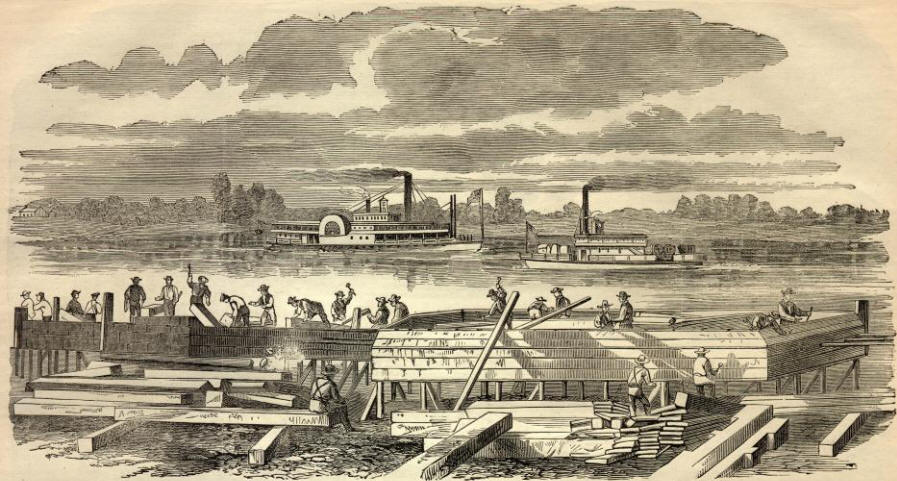 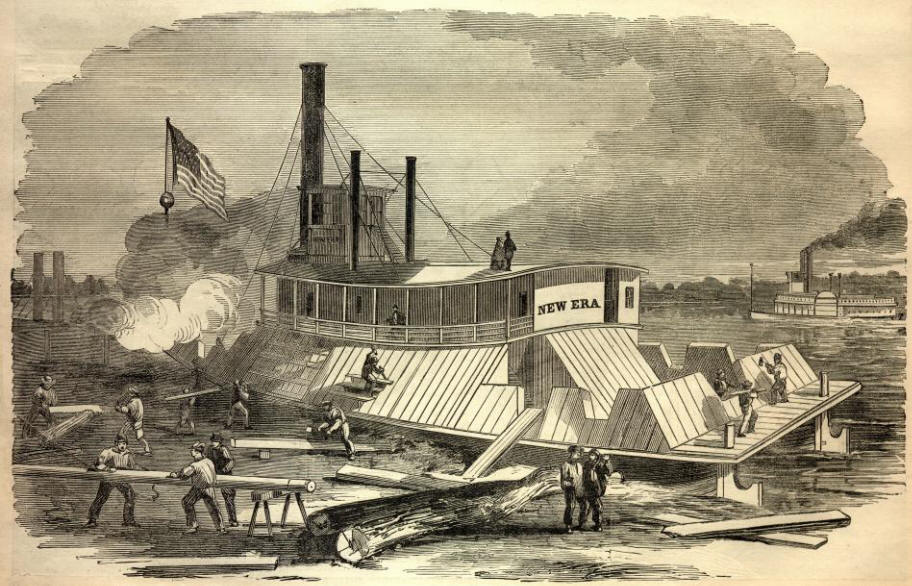 |
||||||||||||||||||||||||||||||||
|
|
||
|
|
Site Copyright 2003-2018 Son of the South. For Questions or comments about this collection, contact: paul@sonofthesouth.net |
|
|
Are you Scared and Confused? Read My Snake Story, a story of hope and encouragement, to help you face your fears. |
||
